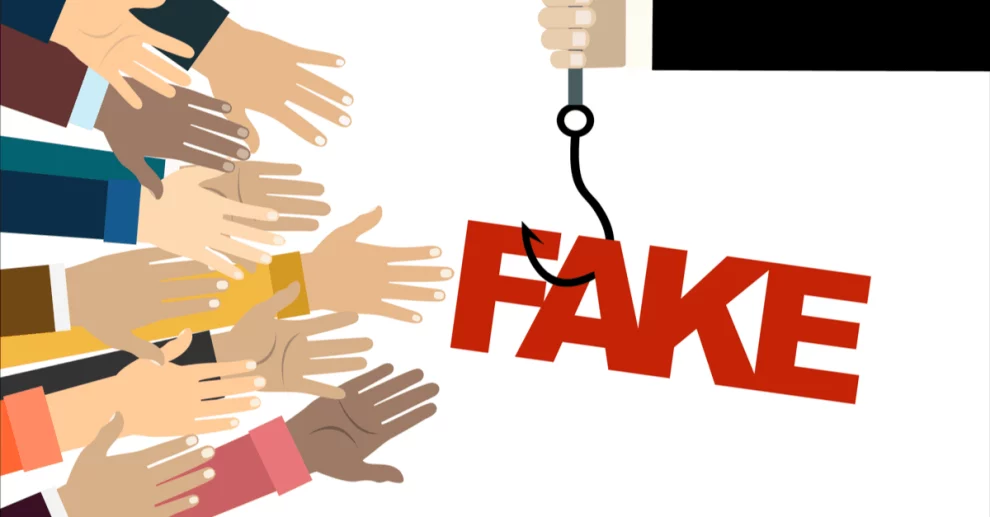Fake news is a major problem that’s gaining prominence. This article will provide a number of activities to teach students how to evaluate websites and identify whether they are authentic or not.
This activity is based on a 2019 experiment that evaluated how well high school students evaluate websites. The study involved 3,000 students performing various web tasks. Many of these students incorrectly evaluated the information by relying on likes and reactions.
1. False News Sites
A fake news site is a website that spreads inaccurate or misleading information. This can include political propaganda, hoaxes, and satire.
Wineburg notes that a 2019 study of high school students found most struggled to evaluate online sources. For example, fewer than one in three realized that a website on climate change was run by a group funded by Exxon.
Show students this checklist for detecting fake news sites. Ask them to consider each question carefully when evaluating a website.
2. Fraudulent Websites
Fake websites are an excellent way to teach students how to spot red flags online. They can learn about why false information ends up on the web and practice evaluating the credibility of the information they find.
The first thing they should check is for the padlock icon in the address bar, which indicates that the site is secure. They can also look for privacy and return policies.
3. Social Media Sites
Using sites like Facebook, Twitter, YouTube and Flickr can be a great way to teach students how to evaluate websites Legit or `Scam Reviews. Students can learn how to look for a website name and URL, the date of publication, spelling and grammar errors and links to other information sources.
Teaching students to become media sleuths is an important life skill. Use this lesson plan from the Techie Teacher to help students practice their skills.
4. Scam Sites
The Web is a vast ocean of information, and students must be careful about what they click on. Scam sites exploit a range of psychological exploits to convince students to enter their credentials, download malware, or submit personal or financial information.
Look for sloppy design, odd grammar, and out-of-date information on websites. Also check for a padlock icon in the URL bar and HTTPS prefix to verify that the site is secure.
5. Fraudulent Emails
One of the easiest ways to tell if a website is fake is poor language. Legitimate sites have copywriters and editors to ensure that the language is clear and understandable. This hoax site is a good example as it contains many errors. In addition, the site has questionable design practices. Both of these are indicators that a website is not legitimate. This fake site is a great way to teach students how to recognize a false website.
6. Spam Emails
Easily the most common form of unsolicited email, spam uses misleading information and scare tactics to trick users into divulging personal information or taking some action.
The first spam message was sent in 1978 to promote Digital Equipment Corporation computers.
Teach students to identify credible websites using this free credibility checklist and accompanying slideshow. Permission granted to adapt and use as needed.
7. Fake News Websites
Fake news is all over the media, and it’s important for students to know how to spot it. This lesson helps them understand why false information ends up online and practice evaluating the credibility of websites and news articles.
A satirical website that publishes anti-vaccine and conspiracy theories. Also imitates Fox News.
8. Scam Websites
Scam websites attempt to trick you into downloading malware or submitting your personal information. They often employ social engineering techniques, such as fear and urgency (time-sensitive offers or account security alerts), to make you act without thinking.
Students should learn how to check credibility before trusting a website. They can enter a domain name to discover its owner and who is behind the site. They can also look for questionable design.
9. Fraudulent Websites
The Internet is a sea of information and not all of it is credible. Students need to learn the reasons why false information ends up on the web and criteria for weeding out unreliable sources.
This lesson provides students with a fake website to evaluate and come up with their own criteria for determining credibility online. Students can work in pairs or as a whole class to complete this task.
10. Social Media Sites
It’s important for students to be able to evaluate websites on their own. As with all skills, practice is key!
Students can learn to be website sleuths by reviewing three facets of any site: 1. appearance versus content; 2. source of information; and 3. purpose.
Look at the domain of the website to verify its authenticity. A reputable site should be easy to navigate without distractions from many advertisements or pop-ups.
















Incredible tips and straightforward. This will be exceptionally helpful for me when I get an opportunity to begin my blog.